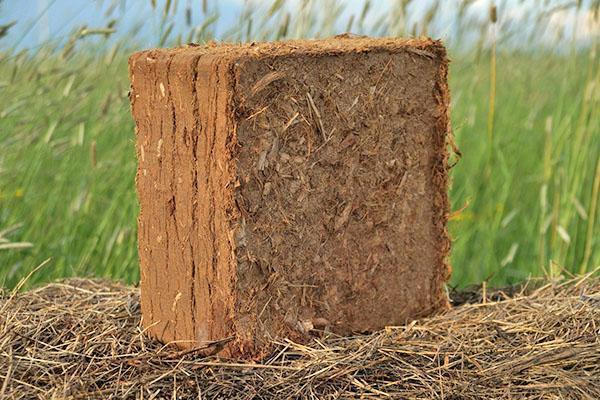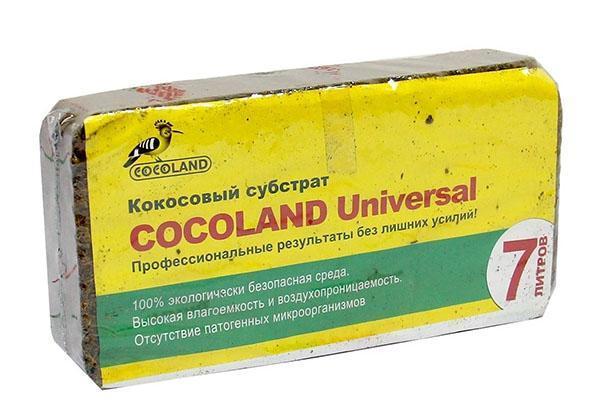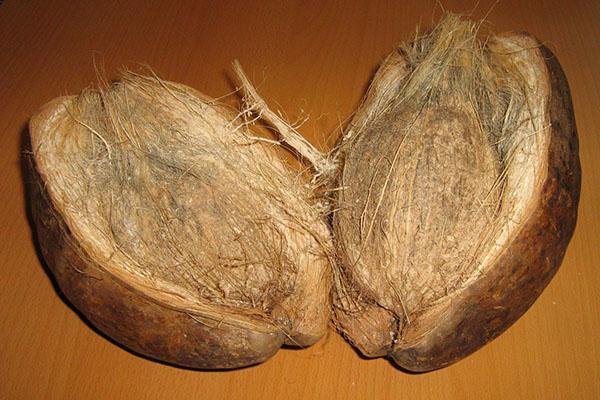We use coconut substrate to grow good seedlings
 The main difficulty in growing seedlings is the correct selection of soil. For the emergence of friendly seedlings in the earthen mixture, the correct ratios of nutrients, moisture and oxygen are necessary. Coconut substrate will be of invaluable help in this. According to gardeners, it is an excellent soil filler, providing plants with ideal conditions for growth and development.
The main difficulty in growing seedlings is the correct selection of soil. For the emergence of friendly seedlings in the earthen mixture, the correct ratios of nutrients, moisture and oxygen are necessary. Coconut substrate will be of invaluable help in this. According to gardeners, it is an excellent soil filler, providing plants with ideal conditions for growth and development.
What is coconut substrate made from?

 Ropes, ropes, mats, mattress fillers are made from fibers. For some time now, fibers and shavings have been used as a substrate for growing indoor flowers and seedlings. There are 3 types of coconut substrate filler:
Ropes, ropes, mats, mattress fillers are made from fibers. For some time now, fibers and shavings have been used as a substrate for growing indoor flowers and seedlings. There are 3 types of coconut substrate filler:
- fiber - strong long threads with excellent hygroscopicity;

- peat - the smallest fraction, characterized by significant moisture content;

- chips - particles of the outer shell of coconuts, which increase the air permeability of the substrate.

For the production of coconut seedlings, all 3 products are selected in the proportions most suitable for growing different types of garden crops.
Forms of release of the substrate
For greater convenience, this material is produced in several forms:
- Tablets and discs are pressed washer-shaped objects with a volume of 5, 10 and 20 cubic meters. The largest disc weighs 650 g when dry, and when wet, it grows in size to 8 liters. Short fibers form the basis of the tablets.

- The mats are rectangular in shape. Their weight ranges from 1.6 kg to 5 kg, and their wet volume ranges from 14 to 50 liters. Longer fibers, chips and peat are used for their production.
- Coconut substrate in briquettes is produced in a wide range - the smallest are designed for planting one or two indoor flowers, and the largest are purchased by companies that produce seedlings for wholesale. Briquettes consist of fibers with peat and small chips.
With such a wide selection, it is not difficult to find a coconut substrate that suits your needs.
Properties of coconut substrate
 This material is so widespread due to its unique properties:
This material is so widespread due to its unique properties:
- by its composition, the substrate is organic, which decomposes over time completely, assimilated by plants without residue;
- record increases the air permeability of the soil, which is indispensable for seedlings;
- mold does not develop on the surface of the tablet, and weeds do not grow;
- the substrate absorbs all excess moisture, giving the plants only what they need;
- the material has a neutral reaction that suits most plants;
- fibers decompose slowly, which allows them to be used for several years;
- the composition fully meets the most stringent environmental standards;
- the substrate is additionally impregnated fertilizersmost suitable for seedlings;
- the material is odorless and absolutely non-allergenic.
The listed properties make it possible to widely use the substrate as a filler in hydroponic culture.
Preparation for use
 Before using coconut seedlings, it must be properly prepared. Let's take a 1 kg coconut briquette as example:
Before using coconut seedlings, it must be properly prepared. Let's take a 1 kg coconut briquette as example:
- free the briquette from packaging;
- put in a 10-liter bucket;
- pour 2 liters of water and leave to swell, stir and loosen it is not required;
- after a few minutes, add another 3 liters of water, cover with a lid or foil and leave to swell further.
 After a few hours, the mixture will be completely ready for use.
After a few hours, the mixture will be completely ready for use.
The tablets and discs are soaked in 40 ml of room temperature water and used to germinate the seeds.
How to grow seedlings in a coconut mixture
 The pure substrate is usually used only for seed germination. Seeds are laid out on the surface of the prepared tablets in special recesses, covered with a film and waiting for the emergence of seedlings, regularly removing the shelter for ventilation. When the substrate dries up, it becomes noticeably lighter. In this case, it is moistened by adding a little water to the pan.
The pure substrate is usually used only for seed germination. Seeds are laid out on the surface of the prepared tablets in special recesses, covered with a film and waiting for the emergence of seedlings, regularly removing the shelter for ventilation. When the substrate dries up, it becomes noticeably lighter. In this case, it is moistened by adding a little water to the pan.
After the seedling has grown and penetrated the roots of the entire tablet, it is transplanted into a larger container. For the full development of seedlings in a mixture of coconut substrate in briquettes, use the usual peat, leafy or sod land, as well as ash, compost or rotted manure.
A clean substrate contains too few nutrients, so it is used as one of the components of the potting mix.
Substrate use options
 Coconut mixture is used not only in growing seedlings. It is indispensable in almost all areas of crop production, and the most exotic way found itself in the use of coconut substrate for the care of giant snails - Achatina. These leisurely mollusks feel at their best in it. The rest of the methods are more traditional:
Coconut mixture is used not only in growing seedlings. It is indispensable in almost all areas of crop production, and the most exotic way found itself in the use of coconut substrate for the care of giant snails - Achatina. These leisurely mollusks feel at their best in it. The rest of the methods are more traditional:
- growing indoor plants, especially those requiring light aerated soil;
- rooting of cuttings of grapes, roses, dahlias, currants;
- use in hydroponics - the substrate does not change the acidity of the solution, does not clog it and has excellent aeration;
- mulching of any horticultural crops. This measure allows you to forget about weeds and excessive watering and insulate the roots for the winter;
- increasing soil looseness and air permeability. This measure is necessary in the reclamation of heavy clay soils.
Coconut substrate is useful as a bedding for pets, terrariums and dry aquariums, but its main purpose is to grow strong seedlings with a well-formed root system.